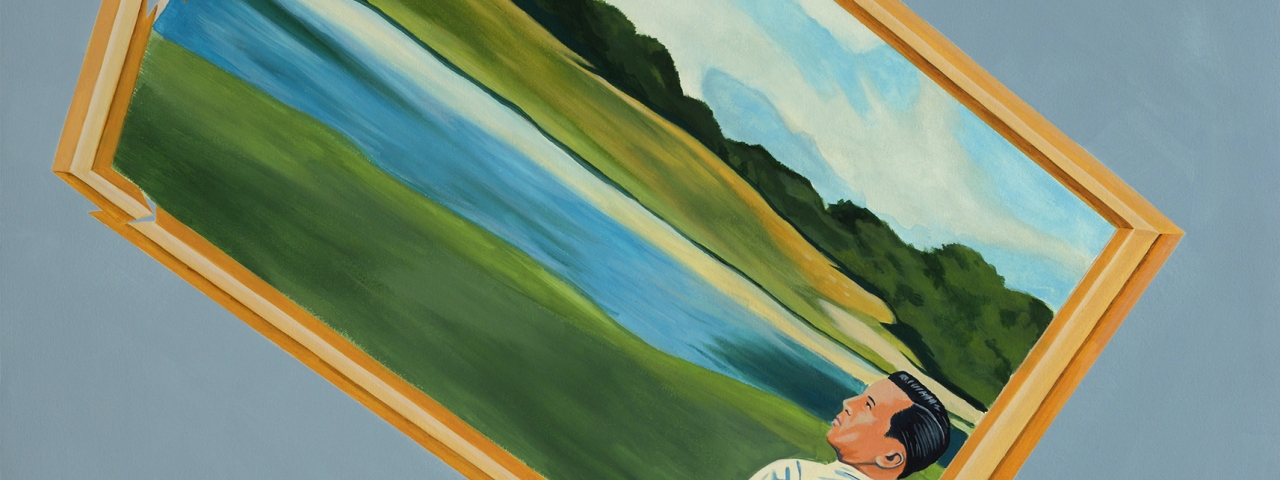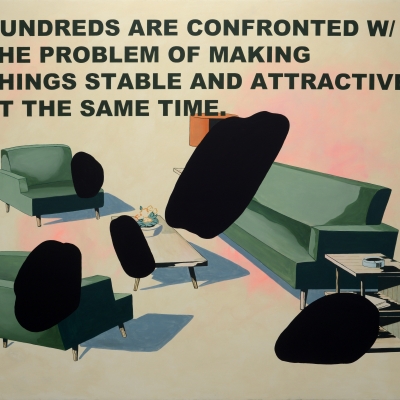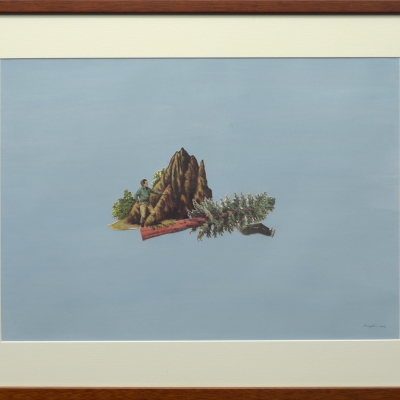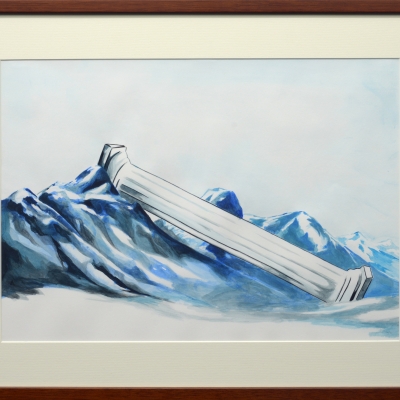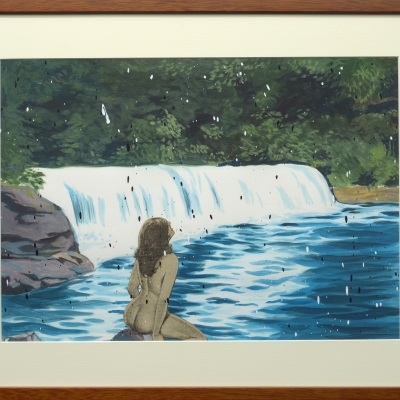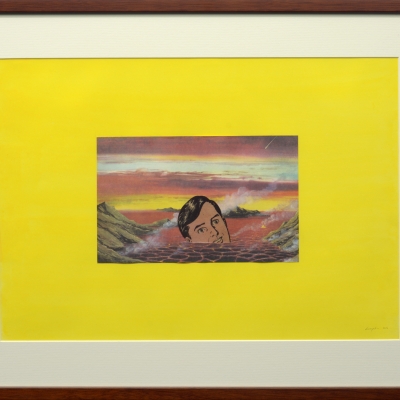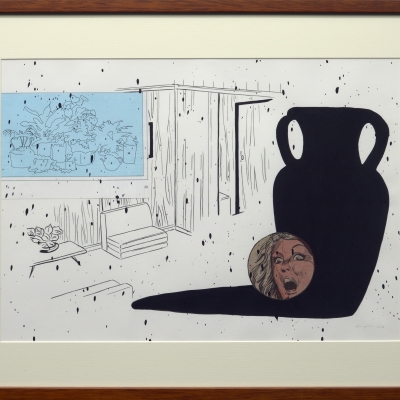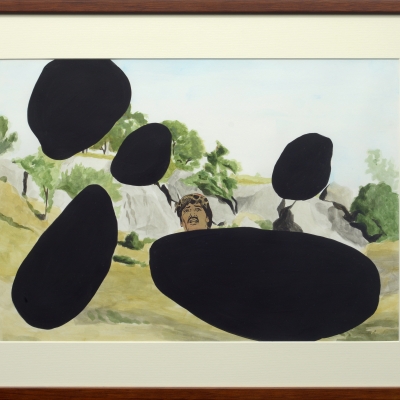. Her work is glib and witty, sharp while poking fun at pictorial conventions, at natural ways of seeing and its interpretation, to reveal that the art of painting is such that, as another convention in the vast array of signification.
As follows, Gadia’s paintings feature darkened blobs that conceal the whole picture, floating like empty captions, containing an absence that in itself becomes an artifice which completes the work, and prefaced by troubled words of advice for those who seek stability and style in things that are abstract. Her work is without doubt monumental in terms of its imaginative sweep and approach to the consciousness of art, subverting its symbols and tropes to question its mandatory understanding. To this effect, a pillar is drawn toppled over high mountains, without the function to push the weight of progress, like the myth of modernity whispering in its slumbers. Another pictures a gigantic hand painting a set of trees, mountains, and the landscape; elsewhere, a different set of landscapes is pieced together with other landscapes, turning it into a construed reality based on dream sequences and sensational logic. Consequently, these monochrome drawings tease not just for more pigments but also minimize the information used by the viewer to render its supposed meaning. By removing the all-around background, of its context, highlights instead the artifice of nature, the awkwardness of its absence, that of experience. Whereas the experience of life, natural to ourselves, becomes instead a collaged rendition of reality.
Therefore, by way of nostalgia, of remembrance with utmost sentiment, a false history clipped from stock, pictures having been formed by numbers, settings conceived according to chance arrangement, the dread worn around the eyes of the viewer is stripped naked, consoled only by a punchline thrown minus the joke aimed unknowingly at us, in its irony. It is this reinvention of experience through the assembly of involuntary memory, into a selected fashion of memorabilia seen behind the chromatic lens of the romantic, that produces an alienating condition of quasi self-awareness, autonomy in the age of simulation, in order to witness the world uniquely as an individual, making art for art’s sake. Nature, as a concept, is a sublime condition of the mind, undefinable, endless, deep, and terrifying.
Text by Arvin Flores

